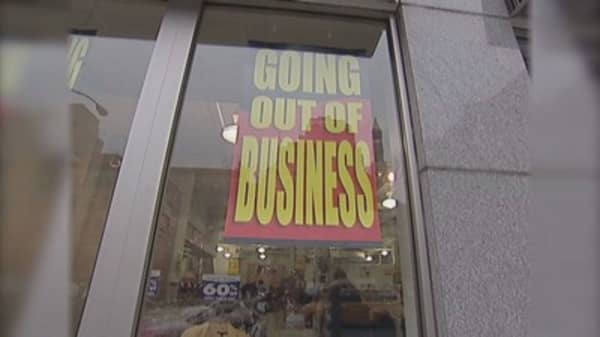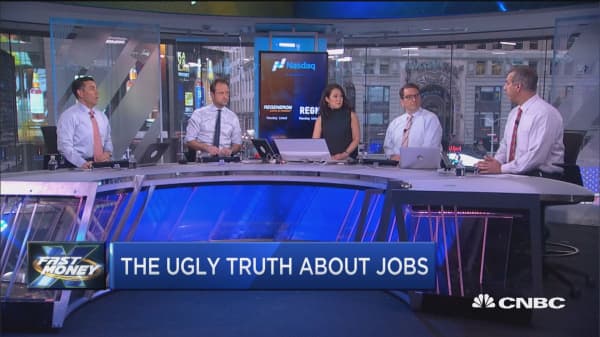After months of steady growth, the pace of hiring stumbled in March as retailers shed more jobs as part of an industrywide retrenchment.
Nonfarm payrolls grew by just 98,000 last month even as the
Still, the overall pace of hiring was about half the expected increase of 180,000, according to economists surveyed by Reuters.
"It turns out a sluggish economy really doesn't create large numbers of new jobs," Joel Naroff, president of Naroff Economic Advisors, said in a note to clients.
Unusually mild weather in the first two months of the year may have shifted hiring in weather-related industries like construction earlier than normal, creating a drop in new hires last month, some analysts noted. A major storm in the middle of the month also may have put a damper on hiring in March, they said.
But the biggest drop came in the retail sector, which lost 30,000 jobs and has been struggling with economic forces that show little sign of easing.
Retail jobs have been shed due to a string of recent bankruptcies, which are heading toward their highest level since 2009. Meanwhile, the supply of brick-and-mortar stores outweighs demand, leading several major retailers like Macy's and Sears to announce widespread store closings in an effort to boost productivity.
The rapid growth of online shopping has also contributed to the industry's contraction, as has a shift in consumer spending toward things like travel and other services.
After a long dry spell, workers' wages began picking up in the last year. The latest monthly jobs data show the average weekly wage rose again, up 2.7 percent from a year ago.
But inflation has also begun to perk up, which creates another a headwind for retailers. Raising prices dampens
"With inflation increasing at a similar pace (to wage growth), household spending power continues to go nowhere, and that is likely to restrain consumption going forward," said Naroff.
Not all retailers are cutting back. The continued strength in the housing market has helped spur sales of furniture and home and garden supplies, creating retail jobs in those sectors over the last six month, according to Labor Department data.
Car dealers and auto parts stores also have been steadily hiring.
Department stores and general merchandisers have been the hardest hit.
Still, most economists don't see the disappointing March jobs report as a sign of longer-term weakness.
As the rest of the economy continues to expand, the job market should see a continued, if somewhat slower, pace of hiring, according to Paul Ashworth, an economist at Capital Economics.
"Payroll gains should now settle down to a steady 150,000 to 170,000 per month, which would be enough to keep the unemployment rate on a gradual downward trend," he said in a note to clients.
Watch: Retail's warning to the world





